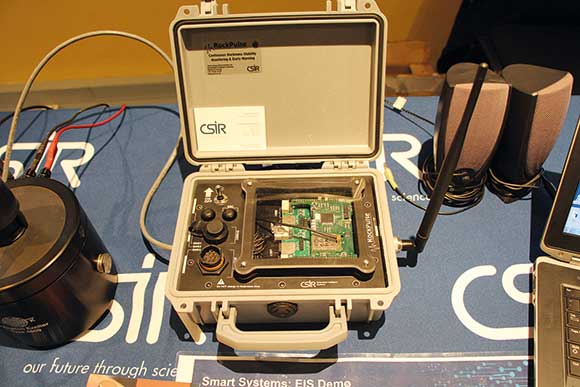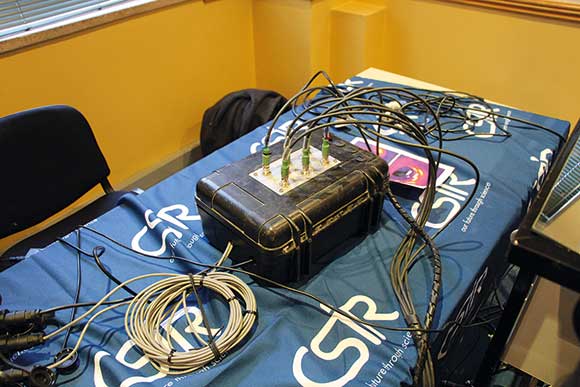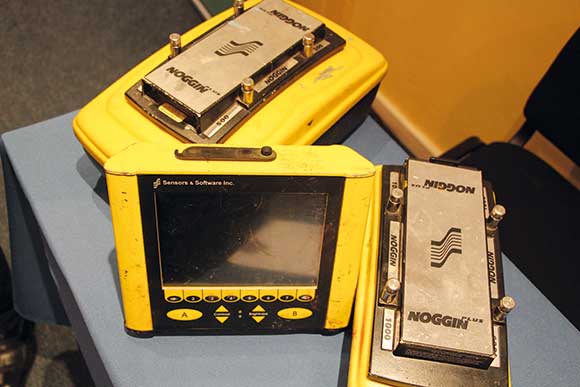
The topic of safety in mines has been in the South African news for all the wrong reasons, not just lately, but for much too long and at the cost of far too many lives. The CSIR has been developing a range of technologies to combat the problem, and showed them off at an event at the Mandela Mining Precinct in Johannesburg in late July.
Among the technologies displayed was a robot platform equipped with safety inspection sensors to enter mines during safety periods. Known as ‘Monster’, the robot aims to assess and identify risks for underground mines.

Ground penetrating radar (GPR), which is being researched as one of the South African Mining Extraction, Research, Development and Innovation (SAMERDI) Advanced Orebody Knowledge technologies, was also displayed. This technology contributes to the Zero Harm objective, by enabling miners to visualise potentially hazardous geological structures in the hanging wall that could lead to falls-of-ground.
The CSIR also developed a pedestrian detection system, which uses a range sensor to determine the distance to each identified person and tracks each person to determine if and when a collision is likely to occur.

Addressing the media, CSIR mining experts, Dr Dave Roberts, Dr Shaniel Davrajh and Dr Michael van Schoor, said the organisation is working hard to come up with cutting-edge technologies to improve safety in the mines. While commenting on the role the CSIR is playing in supporting the South African mining industry, CSIR principal researcher, Dr Roberts, said the organisation was identified as a primary research provider to the Mine Health and Safety Council (MHSC) Centre of Excellence.
“The CSIR has core skills and competence in all of the strategic research areas of the MHSC from a safety perspective. The organisation has invested significantly in laboratories and continues to provide human resources for the provision of services to the sector. We have offerings in support of occupational health and safety (OHS) in mining with infrastructure, such as mechanical testing, a steel wire rope testing facility, water laboratories and a self-contained self-rescuer testing facility,” said Singh.

Principal engineer, Dr Davrajh, highlighted the importance of using robotic technologies in the mines. He said using these technologies could assist in reaching some of the areas that are not accessible during an incident. “A robot equipped with safety inspection sensors will enter the mine during a safety period. It becomes very difficult and dangerous for humans to enter into the mine after an incident,” he elaborated.
Principal geophysicist, Dr van Schoor, talked about the use of GPR technology for rock mass stability investigations, saying there was a need for reliable rock mass stability determination. “Managing health and safety risk in a mine requires real-time monitoring and quantification of the underground hazards and the exposure of personnel and equipment to such hazards.”
Another technology that was exhibited is an early-warning and monitoring system called RockPulse, which will assist mines with listening to raw micro-seismicity, extracting micro-fracture features and analysing the resulting series of features to detect large instabilities taking place in the rock mass in time.
For more information contact David Mandaha, CSIR, +27 12 841 3654, [email protected], www.csir.co.za
© Technews Publishing (Pty) Ltd | All Rights Reserved